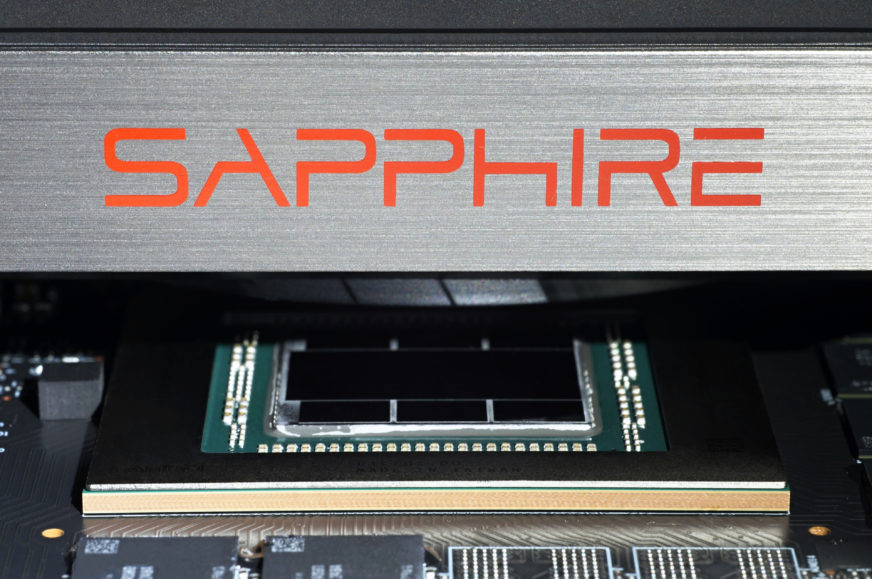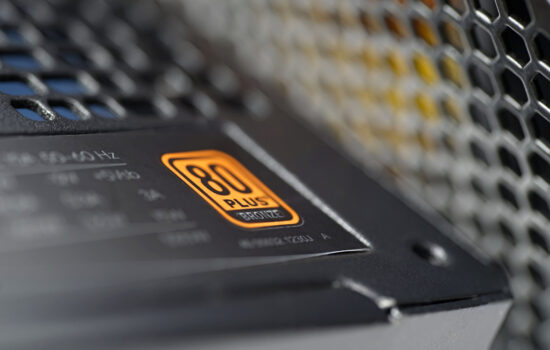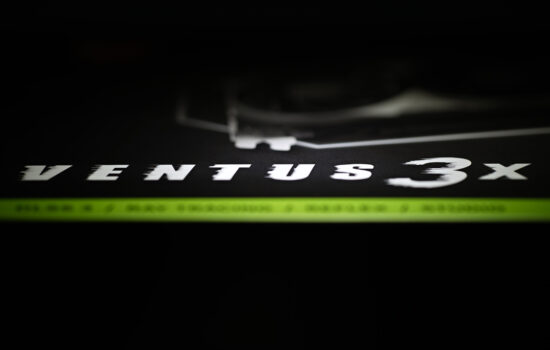Conclusion
While someone may find the RX 7900 XT graphics card to be the most attractive within its price range, another may see the RTX 4070 Ti in that position. And both are right, they might just disagree on priorities. Outside of ray-tracing graphics, the Radeon is even attacking the RTX 4080. Admittedly this is at the expense of, say, worse technological balance and also worse power efficiency, but if someone doesn’t appreciate GeForce’s strengths…
If we had only two variables – rasterization speed for games and price, the Radeon RX 7900 XT has no competition in its price range. The latter only appears, speed-wise, in the significantly more expensive GeForce RTX 4080, for which Nvidia bet on different customer requirements. But we’ll get to where Radeon loses out significantly to GeForce later. Aside from settings applying ray-tracing units, the RX 7900 XT beats the RTX 4070 Ti, a rival graphics card, by a class. The difference in average gaming performance in favour of the Radeon (RX 7900 XT) is 15–19%. The lower number (15%) refers to UHD/2160p resolution, which these graphics cards are usually fine for. Unless you require RT settings and a high-speed monitor. The RTX 4070 Ti is the “weaker” option even in titles that are better optimized on GeForce (including Control).
Of the 18 games tested, the only one where the RTX 4070 Ti has the edge over the RX 7900 XT is DOOM Eternal. And that’s only in high resolution of 2160p. In Assassin’s Creed: Valhalla and Borderlands 3, the RX 7900 XT’s edge is as much as 26–27%, in CS:GO as much as 40 %. It’s not usually this abysmal, and in most games the RTX 4070 Ti’s deficit is under 10% (F1 2020, Forza Horizon 4, Mafia: DE, Metro Exodus, Shadow of the Tomb Raider and so on), but it often gravitates more towards comparisons with the RTX 4080. Even that one lags behind in UHD in games like Red Dead Redemption 2, CS:GO or FIFA, but is usually faster on average, as illustrated by the overall gaming performance charts. But notice one thing in them, namely that while in 2160p the RX 7900 XT loses to the RTX 4080 by 7%, in QHD/1440p the results are already even and In FHD/1080p, Radeon breaks into the lead.
How is it possible that the RTX 4080 is faster in high resolutions where only the GPU is the limit, but in FullHD the order flips and suddenly the RX 7900 XT is better despite the fact that the CPU limit should knock both cards to the same level at most? The graphics drivers of the Nvidia Ampere and Ada Lovelace architectures have more overhead according to various observations. That is, they consume slightly more CPU cycles for each frame in the drivers than AMD graphics card drivers with RDNA 2 and 3 architectures. If the game is CPU-limited , then there may be a situation where Radeon can achieve higher fps than GeForce because the number of CPU cycles is finite and an AMD driver with this allocation can handle more frames than an Nvidia driver. And even if the Nvidia GPUs themselves need less CPU time than the AMD GPUs (which shows up in 2160p resolution), this doesn’t show up in a CPU bottleneck situation – it’s how many frames the CPU can handle per second that’s critical. So much for a small digression on why, across all games, the RX 7900 XT is the faster card in FHD than the RTX 4080, although in UHD this is no longer the case.
For owners of high-speed monitors, the Radeon RX 7900 XT may be a more attractive option than the RTX 4080. Of course still assuming that gaming performance with ray-tracing graphics is not taken into account. The latter is significantly weaker with the RX 7900 XT even compared to the RTX 4070 Ti. Only in Shadow of the Tomb Raider are the results balanced, with a relatively small amount of RT workload. Where the ray tracing application is more complex, the RX 7900 XT is already roughly 25–35% slower compared to the RTX 4070 Ti. This is the case in Control, in Cyberpunk 2077 or in Battlefield V. In the original Metro Exodus (so it doesn’t apply to the Enhanced Edition with extremely hard RT) the difference is smaller, but that’s for a similar reason to Shadow of the Tomb Raider – again, there’s not that much ray-tracing.
So if you want ray tracing in your games, the RX 7900 XT’s attractiveness slowly diminishes, even more so when you’re also interested in DLSS 3 for Frame Generation, which only the GeForce RTX 4000s exclusively support. Then there’s also the GPU acceleration of tensor cores in the application environment in Nvidia’s favour. The RX 7900 XT also often lags behind shader acceleration in 3D rendering, in Blender under OpenCL it takes longer to do everything than the RTX 4070 Ti with CUDA. But again, impressive results are in Autodesk applications, where the RX 7900 XT dominates over the GeForce (including the RTX 4080) in most cases.
Although there are scenarios where the RX 7900 XT offers a more attractive price/performance ratio compared to GeForce (RTX 4070 Ti and RTX 4080), the overall Radeon picture is made worse by weaker power efficiency. Not significantly, but the difference of some 15% is there at the limit of maximum performance. The RX 7900 XT Pulse draws up to 325W, which is 5–10% more than the MSI RTX 4080 16GB Suprim X. On the other hand, Sapphire spikes GPU clock speeds quite high. In games it reaches at least 2500 MHz, in CS:GO even up to 2623 MHz. So there is some room for tuning (undervolting and underclocking) to increase efficiency. Due to the relatively high power draw, the RX 7900 XT in the Sapphire Pulse version is somewhere in the middle in the noise measurement charts, also when it comes to the coils. These are noisier, but less so than the RTX 4080 16GB Suprim X.
The Sapphire RX 7900 XT Pulse is a very solid card with no obvious flaws, and moreover, among such powerful graphics cards, has a nice price/performance ratio, without applying RT, more attractive than the RTX 4070 Ti and RTX 4080 have. If you don’t rely on ray tracing and can survive without DLSS 3, the RX 7900 XT Pulse is a great choice. Especially for lower resolutions in combination with monitors with very high image refresh rates.
English translation and edit by Jozef Dudáš
| Sapphire RX 7900 XT Pulse |
| + Very high performance (also suitable for 2160p/4K gaming) |
| + Without ray-tracing graphics settings, it significantly outperforms the RTX 4070 Ti... |
| + ... and at lower resolutions it is even faster than the RTX 4080 |
| + Attractive price/performance ratio for a high-end card |
| + Solid cooler. It is not noisy even at this high power draw... |
| + ... and yet the temperature is average – GPU temperatures are kept to 65 °C and memory temperatures do not exceed 85 °C |
| + In all axes smaller size compared to most RTX 4070 Ti and RTX 4080 |
| + ... and thus better compatibility with both cases and surrounding PCIe expansion cards |
| + Support for AV1 encoding |
| + DisplayPort 2.1 support, which GeForces don't have |
| - Weaker ray-tracing graphics performance. Does not even reach the level of GeForce from the Ampere generation (RTX 3000) |
| - Slightly worse power efficiency than RTX 4070 Ti and RTX 4080 |
| Odporúčaná koncová cena: 899 EUR |
For cooperation in providing the tested hardware, we would like to give special thanks to the Datacomp e-shop
- Contents
- Sapphire RX 7900 XT Pulse in detail
- Parameter chart
- Methodology: performance tests
- Methodology: how we measure power draw
- Methodology: noise and sound measurement
- Methodology: temperature tests
- Test Setup
- 3DMark
- Age of Empires II: DE
- Assassin’s Creed: Valhalla
- Battlefield V
- Battlefield V with DXR
- Borderlands 3
- Control
- Control with DXR
- Counter-Strike: GO
- Cyberpunk 2077
- Cyberpunk 2077 with DXR
- DOOM Eternal
- F1 2020
- FIFA 21
- Forza Horizon 4
- Mafia: DE
- Metro Exodus
- Metro Exodus with DXR
- Microsoft Flight Simulator
- Red Dead Redemption 2 (Vulkan)
- Red Dead Redemption 2 (Dx12)
- Shadow of the Tomb Raider
- Shadow of the Tomb Raider with DXR
- Total War Saga: Troy
- Wasteland 3
- Overall gaming performance per euro
- CompuBench (OpenCL)
- SPECviewperf 2020 and SPECworkstation 3
- FLOPS, IOPS and memory speed tests
- 3D rendering 1/2 (LuxMark a Blender@Cycles)
- 3D rendering 2/2 (Blender@Radeon ProRender and Eevee)
- Photo editing (Adobe Photoshop, Lightroom and Affinity Photo)
- Broadcasting (OBS and Xsplit)
- Password cracking
- GPU clock speed
- GPU and VRAM temperatures
- Net graphics card power draw and performance per watt
- Analysis of 12 V branch power supply (higher load)
- Analysis of 12 V branch power supply (lower load)
- Analysis of 3.3 V branch power supply
- Noise level
- Frequency response of sound
- Conclusion














An interesting thing to look at is a power draw on V-sync 60 or 90 Hz. The 7000 series was obnoxious even compared to 6000 series in this regard, sometimes drawing 2 times the power of Ada GPUs.
Sounds nice, but is there anything to play? I mean, new games. Maybe a Dead Space remaster. What else? OO